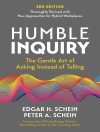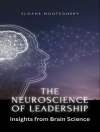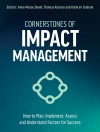The essays in this book aim to map the nature and extent of the societal impacts of Big Science and the mechanisms that generate such effects, as well as highlight the complex realities that can be used as guidelines to fund Big Science facilities, and how we can maximise their impact. As science itself has become a subject of study and debate beyond the scientific community, these collected essays aim to encourage a dialogue with relevant stakeholders (such as scientists, policymakers, research managers and industry) and highlight the complex role that science plays in today’s society.
Key Features:
- A single reference volume comprising a multitude of perspectives on the socioeconomic impacts of Big Science.
- Our author list comprises globally renowned expert authors with a wealth of domain knowledge and direct experience of Big Science facilities.
- Coverage emphasises transferability of best practice/lessons learned from Big Science organisations. The aim is to inspire research managers as well as communications and outreach officers of other Big Science projects.
- The text is relevant for policy experts, employees of funding agencies and professional science communicators.
Tabla de materias
Part I Voices from European Big Science Organizations
1 Introduction to part I: Voices from European Big Science Organizations
2 CERN: the study of the infinitesimally small and the rise of Big Science
3 Assessing the socio-economic impacts of Big Science: case studies from the science and exploration programmes of the European Space Agency (ESA)
4 Bringing value from Big Science projects to society: the view from the ESO
5 The low hanging fruit—the economic boost from the construction of large science infrastructure in the twenty-first century
6 Developing a business case for international research infrastructures: the European Spallation Source
7 Debating the impact of Big Science in the twenty-first century. ELI ERIC: from local to global—addressing the multiple dimensions of impact
8 Industrial liaison officers, key intermediaries between Big Science organisations and their industrial suppliers
9 Analytical research infrastructures and industry engagement: drivers, challenges, and impact
10 The socio-economic impact of DORIS
11 A case study of Big Science at an IGO: how does EMBL respond to changes in societal norms?
Part II Economic and innovation impact of Big Science projects
12 Societal impact of Big Science organizations—a multifaced phenomenon
13 Evaluating the impact of Big Science/research infrastructures
14 The role of large research infrastructures for regional innovation
15 Rethinking how to maximise the impact of your research infrastructure
16 The socioeconomic impact of large scale research infrastructures: models, methods, and data
17 Socio-economic impact for the European Spallation Source (ESS)—a narrative and pathway development approach
18 Applying a systematic technology competence leveraging approach in the knowledge transfer of Big Science
19 Research infrastructure in the UK: evaluating large-scale fundamental physics
20 Space technology entrepreneurship drives societal and economic benefits
Part III Historical perspectives on Big Science
21 Introduction to part III: Big Science in a historical perspective
22 Origins and developments of Big Science
23 Physics enters the factory age
24 Critiques of Big Science
25 From Big Science to Bigger Science: preparing for the LHC
26 Digital fire: the origins and global impacts of the World Wide Web
27 Big Science and technology in the former Soviet Union
28 Big Astronomy: large telescopes and the dual narrative of impact
29 Big Meteorology and Big Climatology: history and prospects
30 Big Biology
31 Turn and turn again: how Big Science both helped and hindered alternative energy in the 1970s
32 Reflections on the New Big Science: capabilities and challenges
33 Selling and over-selling Big Science in the knowledge society
34 Big Science, scientific cosmopolitanism, and the duty of justice
Part IV Big Science in culture and education
36 Picturing Big Science on television in the post-war period. The case of BBC science programmes
37 Bringing Big Science to the Big Screen: lessons from the film industry
38 Distracted enchantment and public attitudes to space exploration
39 Preserving and displaying Big Science
40 Sublime giant machines—artistic reflections between Big Data and a new Grand Tour
41 The art of Big Science
42 A systemic approach to the integration of Big Science in science education
43 Education and public engagement: why the science is Big for everyone
44 Big Science and science education: steps towards an authentic partnership
45 From Big Science to open science
Part V Mapping a global outlook on the role of Big Science organizations
46 Introduction to part V: Mapping a global outlook on the role of Big Science organizations
47 A convergent approach for achieving societal impacts
48 Big Science and Society in Japan: Kamiokande Series, policy systems and ILC
49 Pathways to economic and societal impact of large-sized facilities in China
50 Big Science in ASEAN in the twenty-first century?
51 India’s road to HEP
52 LIGO-India in the global Big Science landscape
53 Big Science in South Africa: a catalyst for human capital development and mission-driven innovation
54 Recent progress towards an African light source
55 Latin America–Europe collaboration with HELEN and EPLANET: 2005–2015
56 The rise of SESAME: a very personal point of view
57 Big Science collaborations—lessons for global governance and leadership
58 A ‘Big Science 2.0’? Re-thinking large-scale scientific projects in the age of science diplomacy
Sobre el autor
Panos Charitos holds a BSc and MSc in astrophysics from Imperial College London and an MSc in media and communications from the London School of Economics. He joined CERN in 2012 as a member of the ALICE Outreach Group and since 2013 he has also served as co-editor of the Experimental Physics Department newsletter. From 2015 to 2019, Panos led the Future Circular Collider (FCC) study communication network, coordinating outreach and dissemination activities for the FCC collaboration and the supporting Horizon 2020 EU-funded projects. Before that, Panos had worked for major daily newspapers and was the founder of ROPI Publications House – specialising in the intersection of science with other fields.
Theodore Arabatzis is Professor of History and Philosophy of Science at the National and Kapodistrian University of Athens. From 2020 to 2022, he was President of the European Society for the History of Science. He has published on the history of modern physics and on historically informed philosophy of science. More detailed information about his work can be found at http://scholar.uoa.gr/tarabatz/home.
Harry Cliff is Science Museum Fellow at the Cavendish Laboratory, University of Cambridge. He works on the CERN LHCb experiment, making measurements of rare decays of beauty hadrons. For seven years, he was also a curator at the Science Museum in London, where he curated two major exhibitions on the Large Hadron Collider (2013) and the science of the Sun (2018). He is an enthusiastic communicator of science and gives regular public talks, including at TED and the Royal Institution in London.
Günther Dissertori is a Full Professor at the Institute for Particle Physics and Astrophysics of ETH Zürich. He works at ETH and at CERN (Geneva), mainly on data analysis with the particle detector CMS at the LHC accelerator. His research group also specialises in the transfer of know-how on detector development for particle physics to other disciplines – e.g. positron emission tomography (PET) in medical imaging. Günther is a member of the Swiss, Austrian and American physical societies; he is also a Fellow of the American Physical Society. From 2019 to 2021, he has been the scientific delegate of Switzerland to the CERN Council, the main governing body of CERN. In February 2022 he took up the role of Rector of ETH Zurich.
Juliette Forneris holds a Ph D in geology from Arizona State University, US. Between 2010 and 2019, she worked as Cluster Manager of Big Science.dk, helping Danish businesses to become suppliers to European Big Science organisations. She worked particularly closely with CERN and ESO in her role as Industrial Liaison Officer (ILO) for Denmark. From 2015 to 2018, Juliette was Chair of the CERN ILO Forum and was also a member of the international and local organising committee for the first Big Science Business Forum (held in Copenhagen in 2018). In August 2019, she took on the position of Director of the International Centre at DTI, managing a team of experts in R&D fundraising (primarily from EU Framework programmes).
Jason Li-Ying is professor in corporate entrepreneurship and innovation and the research director at the Centre for Technology Entrepreneurship, Technical University of Denmark. Jason has research interests in technology and innovation management, organisational learning, strategic management and technology transfer. His work has been published in more than 35 scientific journals such as Long Range Planning, Journal of Product Innovation Management, Asia-Pacific Journal of Management, Technovation, Technological Forecasting and Social Change, R&D Management, Journal of Knowledge Management, and Journal of Technology Transfer, among others. Jason chairs the work package regarding socioeconomic impact metrics for the Brightn ESS2 project (a flagship initiative of the European Spallation Source funded by the EU’s Horizon 2020 programme). Jason also serves as a board member at China-Denmark Innovation House and is on the advisory board for several technology-based firms in Denmark. Jason is associate editor for the Journal of Engineering and Technology Management.












